Packaging
With a high-end product, we would expect some sleek looking packaging, and that is exactly what you get. The top of this panel offers the Enthoo Series and Primo case name at the top. In the middle of all that high gloss cardboard is a front and left side image of the chassis with the Phanteks name at the bottom with the «designed in the Netherlands» line below that.
Phanteks places their name at the top of this panel and delivers 12 features of the Primo in eight languages to cover all of their markets.
The back has a lot of things to look at. There are five images at the top ranging things from the reservoir mounting to the fan hub. In the middle there are three images of the chassis with five more features being addressed. At the bottom there are five more images covering things like dust filtration and Velcro cable ties.
The last panel starts off with the chassis name this time, and delivers the full on specifications chart all the way down to the five year warranty of this chassis. That is right, I said five years.
With a larger and heavier chassis, usually Styrofoam breaks just thinking about supporting a chassis like this. I am pleased to see that even though the plastic liner is ripped, the use of thick high density foam allowed this monster of a chassis to arrive in perfect condition.
Accessories and Documentation
As part of the hardware kit in the box, you get ten wire ties, a long and a short Velcro wire tie to add into the chassis wherever you need them, and you are also given dense foam pads with tape on the back side to support a PSU in the front optional position.
You get all the rest of the hardware and screws in this handy little parts tray. It is just a generic plastic tray like Lian Li would use, but Phanteks takes that additional step to dress things up a bit for their users, even if it is just a tool kit.
Inside of the parts box, there is a full assortment of screws for everything you want to install. They even give you a full assortment of fan screws, pump mounting screws, and delivers on all of the other categories as well with at least one extra that you will need for all of them.
This is that adapter plate I have been talking about for the side of the chassis. With the HDD racks out of the way, this can be screwed to the floor of the chassis and the bottom of the ODD bays to add fans or another radiator to that location.
Even the manual is high-end. A glossy covering to the multi-lingual manual is a classy touch, and this user manual should get you though any bit of the chassis that throws you off your game a bit.
What I think will help everyone to fully understand this chassis is to look at this exploded diagram. It shows all of the main components, where they are located, and gives you a really good idea of what there is to be had in this design.
I just picked a random page of the manual to show what sort of information can be found. Not only do they show the chassis with the entire idea of fan and radiator options with drawing to help you figure out your loop, they even cover the small things like the wiring of the six port fan hub that may be a bit confusing for some people at first glance.
Phanteks Enthoo Primo Ultimate Chassis
The front of the chassis is made of plastic, but then gets a plate of brushed aluminum applied to the majority of this surface. There is a hidden door at the top, and you can see the ring to allow ventilation for the front fans. You will also see that the right hand of the chassis has what can only be described as a Thermaltake Level 10-like support system.
Behind the magnetically closed door, there are five 5.25″ removable bay covers. These are easily removed from outside the chassis, making the removal of the bezel for fan removal or radiator placement easy.
The top of the chassis continues with the brushed aluminum plate mounted on a plastic part, but the bulk of it is then cut away to allow for the removable mesh insert.
Pushing down on the mesh cover at the rear of the chassis will release a latch allowing you to remove that cover. Under it you will find plenty of room to hang the fans below, and add a regular radiator and more fans on top, or just go with a fat radiator and one set of fans.
The front I/O is on the front with the power button and HDD activity lighting, while the bulk is at the top. There you have a light on and off switch, a reset button, two USB 2.0 and two USB 3.0 ports with dust inserts and the HD Audio jacks at the back.
The left of the chassis offers a two window layout. The larger window will give you a full view of the components and the smaller window gives you a look at the Phanteks plate, and whatever you can stick on top of it later.
Below the door, if you push in on two trim pieces, you find that they hold the pair of dust filters for the bottom of the chassis. Having them removable from the side is also much easier than out the back, and is showing the sort of thinking that went into this design.
Out back, there is room for a 120mm or 140mm fan next to the rear I/O, followed by seven expansion slots and more ventilation next to them. The bottom of the chassis has the PSU mounted on its side to the left, but the right is an option to either fill it with a fan, or remove part of the plate and add the second PSU.
The right side panel looks much larger since it isn’t taken up with large windows to offset the size. Here, however, there is ventilation for a couple of 120mm fans at the front of the chassis, and the area at the back edge is to allow a PSU to pull air through it.
The bottom of the chassis uses a thick plastic frame that takes the stress of the chassis and keeps it stable on a desktop. To keep things from sliding around, Phanteks used seven rubber pads for that need, and the dust filters that I slid out earlier are now covering the entire length of the floor.
Introduction
VIEW GALLERY — 43 IMAGES
All I have seen from Phanteks for a long time is its CPU cooler collection. Granted, copying a top tier cooler design and offering it in all the colors that make customers all warm and fuzzy inside was a stroke of genius, and filled a gap in the market that had been there for quite some time. Sort of going on the same logic, Phanteks is now taking on the chassis market, but this time with a design that is all their own.
As they went about designing this chassis, they have gotten to see what all of the latest and greatest cases from the last year or two have offered, what has been successful, and what were just fads or trends of the era. I see a lot of cases in this design actually, and again I have to say that Phanteks put their own spin on it and has come up with something that has a way to deal with many styles of full-tower cases, and turns them all up a notch to bring something to the market that is truly unique.
I can see bits of Corsair Obsidian designs, I can see NZXT influence, even bits that remind me of the Level 10, but as I said, all done in a unique way, and delivers something that could very well be a mainstream case killer for all of these companies. The level to which Phanteks took this full-tower will make all of the big selling case companies currently selling for enthusiast builds need to stand up and take a look at what Phanteks did, as they have certainly raised the bar a bit here in this design.
With all sorts of modularity to the design, and some super sleek external designs, the new Enthoo Primo from Phanteks is aiming to take on the 900D, Switch 810, the Level 10, and try to slaughter the dreams of all who currently own that chassis or are currently in process of doing an over the top water cooling setup.
This chassis is so slick in fact that I am for the first time in a very long time, pondering actually moving away from my TJ11 for this chassis. For those that don’t typically follow my writing won’t exactly get that, but by the time you are finished looking at everything that I have seen with the new chassis from Phanteks, you will not only be sold on the chassis and wanting to buy it, but I think you may even go as far as to harass Phanteks to speed up the availability of the Enthoo Primo. It is just that good.
Specifications, Availability and Pricing
The Enthoo Primo is immense for a full-tower chassis. It stands 650mm tall, it is 600mm deep, and is a portly 250mm wide, and weighs in at a hefty 20kg. For those that never converted to the metric system, that is just over 40 pounds in weight, it’s almost a full ten inches wide, is almost 24 inches deep, leaving this chassis standing at 25.5 inches of steel, aluminum plating and plastic awesomeness. The outside of this chassis has so much going on that I will just wait for the images before I even attempt to destroy your mental images with my interpretation. I won’t do it the justice it deserves.
Internally there is so much going on; I hope that I can cover it all. The front of the chassis offers five 5.25″ drives behind a door that you can use for ODDs or reservoirs. Below that there are six 3.5″ bays that are removable from behind the motherboard tray. On top of that this chassis will stack up to 12 2.5″ drives in the racks and in the various hidden spots behind the motherboard tray. The motherboard tray will house Micro-ATX, ATX, EATX and SSI EEB motherboards, and again has so much to offer around it that I think the images will do a much better job than I can of showing what is available.
Cooling is handled one of two ways. You can air cool this chassis and load the chassis full of more Phanteks fans. There are five 140mm fan included of the possible ten locations for them. You can also use 120mm fans in this chassis, and all told there, you can house up to 16 of those. The other route to go is with water cooling, and is where this chassis really shines. The front of the chassis will house a dual 120mm radiator, while the top offers room for up to a quad 120mm radiator, or a triple 140mm radiator. There is also an optional rack to go in place of the HDD racks, and this will allow for another dual 120mm radiator to go on the side.
The rear of the chassis will hold either a single 120mm radiator, or a single 140mm one. That leaves the floor of the chassis which follows the top and offers room for a quad in 120mm and a triple in 140mm there. Not only that, but there is even a reservoir mounting plate and support bar that runs to the right side of the motherboard, and in the back, on the floor, there is even a pump bracket included in the design. Oh, and I almost forgot, for those enthusiast trying to run the most you can pack unto a tower chassis, there is also room for dual PSUs to be able to provide sufficient power for all your needs.
What is the best part about the Enthoo Primo? As if all of what we just discussed wasn’t enough? Well, this chassis is not yet available as I write this review, but it has been publically noted that Phanteks has already set the MSRP for this chassis. So not only do you get one of the slickest designed cases currently on the planet, and it is loaded inside and out with eye catching details that make you scan this chassis three or four times before you can take it all in, that MSRP is set at an amazing $249.
Now you can see why I said the cases like the 900D, Switch 810, even my TJ11 are now on the chopping block, and I can see all of those potential customers gravitating to this instead, especially for what you get at this price.
Product Description
The bar has been set to a new standard with Phanteks’ release of their first Enthoo Series case. Passionate about cooling and the one that brought you the world’s best air coolers, Phanteks enters the case arena with their functional design with exceptional cooling possibilities, the Enthoo Primo. Accessibility and functionality is what sets the Enthoo Primo on a level of its own. It was constructed from a builder’s point of view with the closest attention to detail. The Enthoo Primo combines innovative design and rich styling that appeal to builders of any caliber. A glimpse through the split window side panel reveals clean interior, capable of being water cooled, air cooled, or both. Phanteks’ Enthoo Primo, unleash unlimited possibilities. Phanteks’ Enthoo Primo features a unique PSU thermally isolated location, multifunctional cable/reservoir cover, exclusive brackets, and massive cooling potential. Phanteks’ new case features a shifted design which allows for the unique PSU configuration. The PSU is thermally isolated, creating cooler temperatures within the case. With the PSU located in the back of the case, this allows for a cleaner look and better cable management.. Exclusive brackets that makes everything a breeze to install. Reservoir bracket that can be use as a cable cover with the modular cover on or as a reservoir bracket with the pre-drilled holes when cover is off. Enthoo Primo includes a pump bracket that supports many different pumps, side radiator bracket and bottom radiator bracket for easy installation. Polished chamfers that subtly accentuate the intake & exhaust areas. Stealth interior: hidden PSU/HDD/cables & grommets. 2x USB 3.0, 2x USB 2.0, microphone, 3.5mm audio jack, LED switch. Support up to 2 PSU’s
The Build and Finished Product
I went ahead and removed the front bezel just to give you a better sense of what is going on back there. When I removed the bezel, I noticed the latch to be able to remove the lower ventilated section of the bezel. This allows you to be able to easily clean the filter along with the pair from the floor of the chassis.
Once I completed the build, I wanted to show off both the drive and the removable section of the dust filter. Technically you do have full access to the fan screws to install a radiator in the front, but I would still pull the bezel to give yourself some working room.
I did opt to install an air cooling based system to see how well the system cools as it is shipped from Phanteks. You may also notice that the HIS video card makes it so I had to remove both the steel plate and the plastic trim piece to allow it to fit correctly. I also really like that all you have to see is the main components, the rest of the system is hidden from view, even without the door on the chassis.
Around the back of the chassis everything fits well, there are no issues with the chassis warping. I tried both PSU mounting positions, and they both have no issues accepting a PSU there.
Since Phanteks goes through all the trouble to pre-wire the chassis, who am I to think I can do better? All I did was to loosen the ties and run my PSU wiring aright along with what is already there. There are also no issues with spacing here, as there is at a minimum 35mm of space.
Once the chassis is all back together, nothing has changed externally, well except for the view through the large window on the dies. I like this about cases, where everything is hidden, but I do need to bring up that the door on the front swings the wrong way.
Powering up the Primo there is also a blue trim line of LED that runs down the front and across the top, more of that Level 10-like styling to the design. Also at this point, I cannot hear the chassis running even with the five additional fans included with the chassis on top of my build components.
Inside the Enthoo Primo Continued
Spinning the Primo around, you can see that all of the chassis wiring has been tended to and tied up to the chassis via the Velcro tie straps found all around the back of the motherboard. Since they are pre-routed, of course they all reach where they need to be. In the middle of all that wiring is a six port fan hub, and a place to store a 2.5″ drive if you want to. The hardware and paperwork, along with some goodies all come in the box tied into the bottom.
Once the hardware is removed, you can see there are six stands to support even the longest of power supplies. To the left, on the floor, you will find the pump mounting plate, and there is even a hole with a grommet just above it to allow you an easy place to run the tubing from the top of the pump.
On the other side of the ODD bays, Phanteks offers two trays that will support a 2.5″ drive. Both of these can be used here, or you can shift one of these to the middle of the motherboard tray.
The six 3.5″ bays are set into two racks, and both are completely removable. If you would like, there is a plate that will install here to allow a dual radiator or even just a pair of 120mm fans to be placed here instead.
With the drive bays now out of the chassis, you can also see how easy it would be to install a dual 120mm radiator into the front of this chassis. You can also see that the ventilation in the floor comes all the way up to here to support that larger radiator. Keep in mind, the front and bottom radiator will conflict with each other if trying to max out both spots potential.
Первый корпус от Phanteks — Enthoo Primo
04.06.2013 09:30
Slayer Moon
SocButtons v1.5

Молодой производитель Phanteks решил, что выпускать одни лишь кулеры уже не так интересно, как это было раньше, поэтому представляет нам новинку мира корпусов для ПК.
Новинка имеет Full-Tower размеры и предназначена для системных плат ATX и тех, что поменьше. Коллеги с TPU отметили высокое качество изготовления изделия, хороший подбор материалов и обилие «фич». К последним можно отнести огромное пространство (в районе 10 сантиметров) за лотком для материнской платы, предназначенное для укладки кабелей, или даже помещения туда частей СВО, таких как помпа или резервуар.
Количество слотов расширения в данном шасси равно восьми, это позволит использовать двухслотовые видеокарты даже в нижнем PCIe слоте системной платы. Количество мест для 3.5″ накопителей равно шести, по три в каждой корзине. При этом на каждое место можно установить до двух 2.5″ SDD/HDD толщина которых не превышает 9.5мм.
Отсеков для 5.25″ устройств у корпуса целых пять штук, в систему охлаждения шасси Enthoo Primo входят два 120мм вентилятора на передней стенке, 120мм вентилятор на стенке задней и места для установки «вертушек» на боковую стенку, в днище и на стенку верхнюю. В комплекте с корпусом идёт 6-канальный реобас, так что вентиляторы можно будет держать в узде.
Фото корпуса Enthoo Primo с Computex

По данным от Phanteks, новый корпус может стоить в районе 199 — 249 евро, в продаже его стоит ждать в июле. Для нас подготовили видео как раз по Enthoo Primo:
Польза:
 |
|
|
Теги:
- case
- chassis
- enthoo
- phanteks
- primo
- корпус
- шасси
View the discussion thread.
| < Corsair демонстрирует необычный корпус Carbide Air 540D | Gigabyte показала системную плату G1.Sniper A85X > |
|---|
| Последние материалы на сайте: |
|
Final Thoughts
Even while I was pointing out the styling that I find to be very reminiscent of other very successful case designs, I don’t think you could put all the parts in a hat and draw any combination of design ideas where it would come together in this manner. By that I mean that even if Phanteks were borrowing ideas, they took all of the best of the best from what is hot and selling in mass amounts, and put it all on one very well thought out, designed, and built chassis you are going to find on the market now, and may even be for some time to come.
The cooling options inside of this chassis are at the top end of what is available as well. An option for 15 120mm fans, or a few less if you want to use more 140mm fans than the five that are included. As the chassis is shipped, it is near silent with a 32dB rating, but I had to have the meter at nine inches from the back and right side to get that level of noise. The rest of the chassis is designed to channel noises away from the user by either placing the venting at the sides, or the way the bottom of the chassis is sealed off by the plastic foot, only allowing air through the back. Even with the stock configuration of the fans, the temperatures were lower than usual, allowing plenty of air to all of the components inside. Then of course you have the water cooling options of a huge radiator in the top and or the bottom, a dual in the front, and a single in the back, it contends like all the rest for the enthusiast to pick this chassis over cases like the 900D.
Everywhere you look, at every corner you turn, and even beyond what your imagination would want the first time around, Phanteks delivers everything any builder out there is looking for in a chassis. Things like the water cooling options, the unique styling, the pre-wiring of the cabling, just everywhere you end up in the Enthoo Primo, you will be amazed at the foresight put into this design. There was only one place where I feel the design slipped up and that was is in the front door. If they would have had it open to the right, I would have been able to say, they covered every angle 100%. With this chassis there were no corners cut, it has everything you can possibly want, and better yet, it is affordable.
Even with a couple of weeks left to wait before these cases end up at your favorite e-tailer’s shelves, the $249 MSRP is a very pleasing price in my opinion. For everything that is designed into this chassis, and all the little things that will really make a water cooling build go from «wow, that looks cool» to «I am so building my next computer in this case.» If you are one of the first to get the Enthoo Primo, fill it up with all sorts of water cooling sexiness, you are definitely going to be fully satisfied with your choice to purchase the Primo, but you will also be the envy of everyone you know.
I feel like I really can’t say enough good things about this chassis, as it hits high marks on features, aesthetics, cooling ability and pricing. There is just no conceivable reason why if you have plans of grandeur with water cooling, that you should pick any other case than Phanteks’ Enthoo Primo.
Compare with similar items
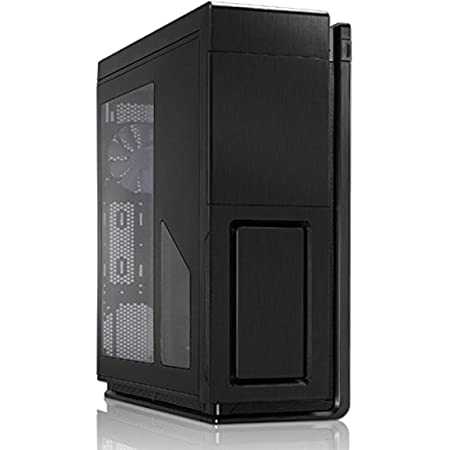 This item Phanteks Enthoo Series Primo Aluminum ATX Ultimate Full Tower Computer Case PH-ES813P_BL,Black/Blue |
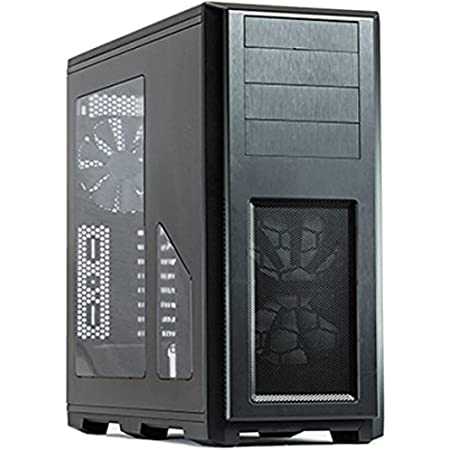 Phanteks Enthoo Pro Full Tower Chassis with Window Cases PH-ES614P_BK,Black |
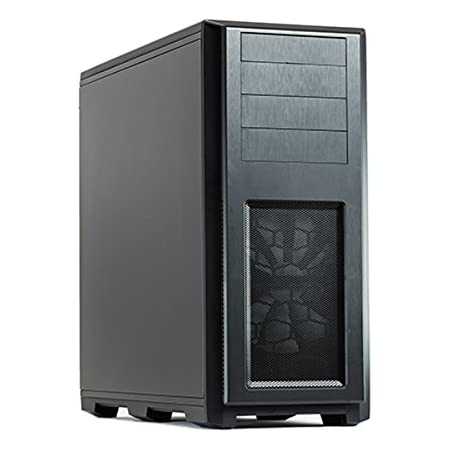 Phanteks Enthoo Pro Full Tower Chassis without Window Cases PH-ES614PC_BK,BLACK NO WINDOW |
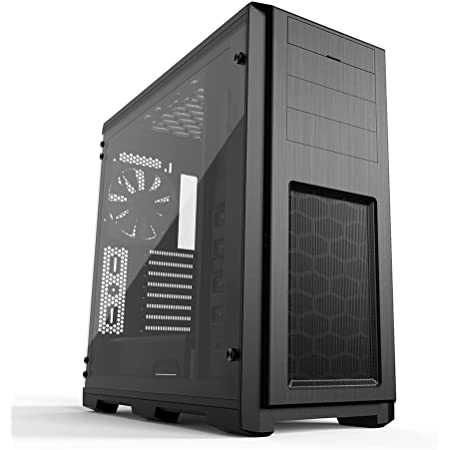 Phanteks (PH-ES614PTG_BK) Enthoo Pro ATX Chassis, Tempered Glass, Intergrated RGB Lighting, Black |
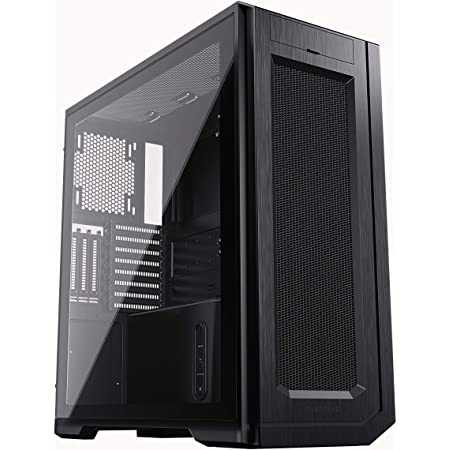 Phanteks (PH-ES620PTG-DBK01) Enthoo Pro 2 Full Tower – High-Performance Fabric mesh, Tempered Glass, Dual System/PSU Support, Massive Storage, Digital-RGB Lighting, Black |
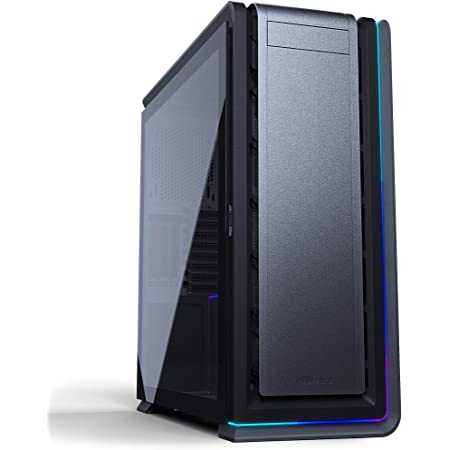 Phanteks Enthoo 719 (PH-ES719LTG_DAG01) High Performance Full Tower Case – Tempered Glass, Aluminum Panels, dual System/PSU Support, MASSIVE Storage, Fan Hub, Digital-RGB Lighting, Anthracite Grey |
|
|---|---|---|---|---|---|---|
| Customer Rating | 4.5 out of 5 stars (264) | 4.8 out of 5 stars (1913) | 4.7 out of 5 stars (407) | 4.8 out of 5 stars (893) | 4.7 out of 5 stars (254) | 4.7 out of 5 stars (774) |
| Price | $328.50$328.50 | $145.99$145.99 | $151.47$151.47 | $162.94$162.94 | $202.68$202.68 | $249.99$249.99 |
| Sold By | BeachAudio | Autocare Depot | Great Fourteen | Great Fourteen | Great Fourteen | Phanteks USA |
| Item Dimensions | 23.62 x 9.84 x 25.59 inches | 22 x 9.25 x 21 inches | 22 x 10 x 21 inches | 21.7 x 9.25 x 21.1 inches | 9.49 x 22.8 x 22.01 inches | 22.6 x 9.45 x 23.6 inches |
| Item Weight | 50.00 lbs | 26.20 lbs | 21.00 lbs | 24.25 lbs | 28.66 lbs | 37.26 lbs |
| Model Year | 2013 | 2014 | 2014 | 2017 | — | — |
Лучший премиальный корпус: ASUS ROG Strix Helios GX601
| Поддержка материнской платы | Е-АТХ/АТХ/М-АТХ/ITX |
| Цветовые палитры | Черное серебро |
| Габаритные размеры | 250 х 565 х 591 мм |
| Дисковые отсеки | 4 х 2,5″, 2 х 2,5″/3,5″ |
| Поддержка радиатора | Спереди: до 420 ммСверху: до 360 ммСзади: до 140 мм |
| Поддержка фанатов | Спереди: до 3 x 140 ммСверху: до 2 x 140 ммСзади: до 1 x 140 мм |
| Зазор графического процессора | до 450 мм |
| Зазор процессорного кулера | до 190 мм |
| Передняя панель | 4 x USB 3.11 x USB 3.1 Gen2 Type-C1 x наушники1 x микрофон1 x светодиодная кнопка управления1 x кнопка управления вентилятором |
- Премиальный дизайн и эстетика
- Рама из полированного алюминия
- Передняя подсветка Aura Sync RGB
- Поддерживает до трех радиаторов AIO
- Поддерживает вертикальную установку графического процессора
- Хлипкая пластина материнской платы
- Комплектные вентиляторы не поддерживают ШИМ
Если вы, как и мы, любите премиальные бренды, то ASUS ROG Strix Helios GX601 вам понравится. Это один из самых привлекательных корпусов для ПК премиум-класса, специально оптимизированный для водяного охлаждения, который может похвастаться потрясающим дизайном, эстетикой и высококачественными материалами. Helios GX601 оснащен тремя панелями из закаленного стекла, рамой из полированного алюминия и встроенной передней подсветкой Aura Sync RGB. Это невероятно чистый и аккуратный корпус для ПК не только потому, что он оснащен многофункциональной крышкой с держателем видеокарты, но и потому, что он имеет заднюю крышку кабеля для удобного управления кабелями.
У Helios GX601 также довольно просторный корпус. Он поддерживает материнские платы E-ATX и может вмещать графические процессоры длиной до 450 мм. Корпус также поддерживает вертикальную установку графического процессора и поставляется в комплекте со специальным кронштейном для графического процессора. Говоря об охлаждении, этот корпус предлагает отличные возможности охлаждения. Внутри него можно разместить до трех радиаторов жидкостного охлаждения длиной от 140 мм до 420 мм. Корпус также оснащен удобной ручкой и передней панелью с RGB-подсветкой. Мы только хотим, чтобы корпус был немного прочнее, чем он есть, и чтобы комплектные вентиляторы поддерживали ШИМ. Помимо этого, ASUS ROG Strix Helios GX601 — довольно удивительный корпус, который отлично смотрится в вашей гостиной.






























